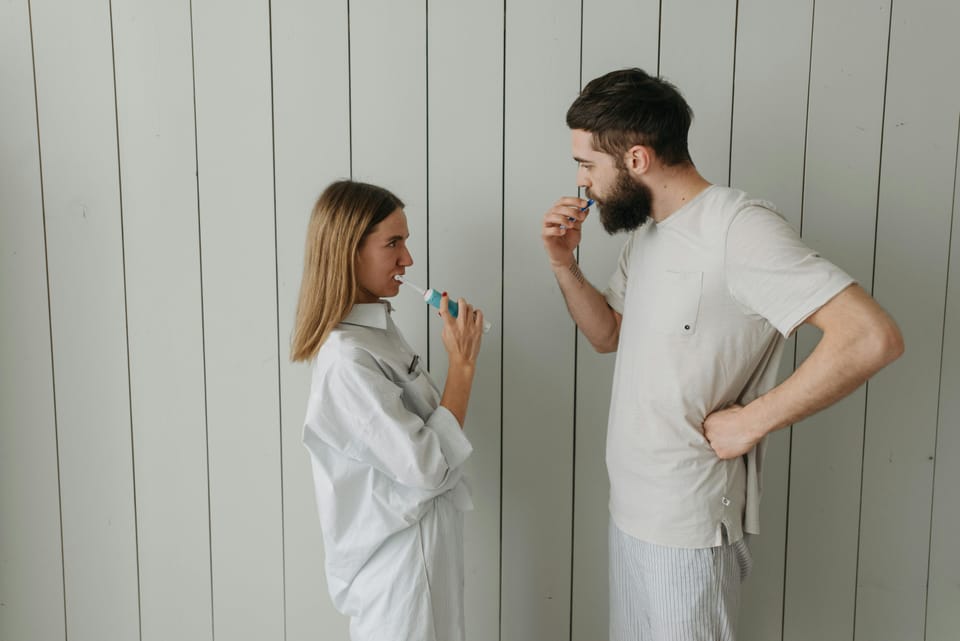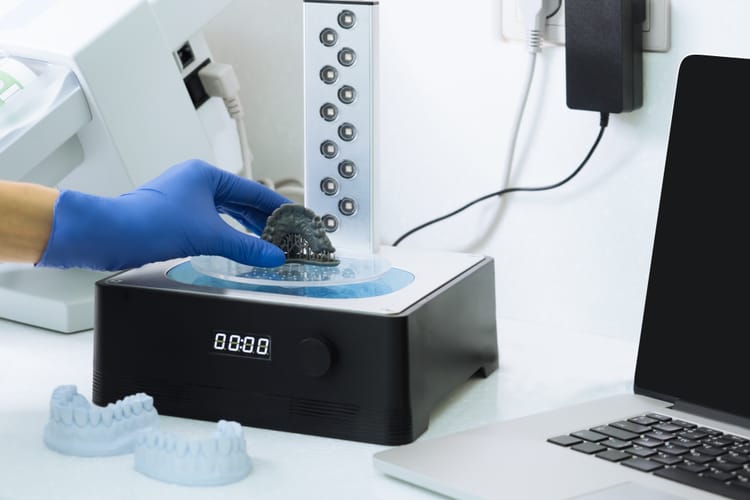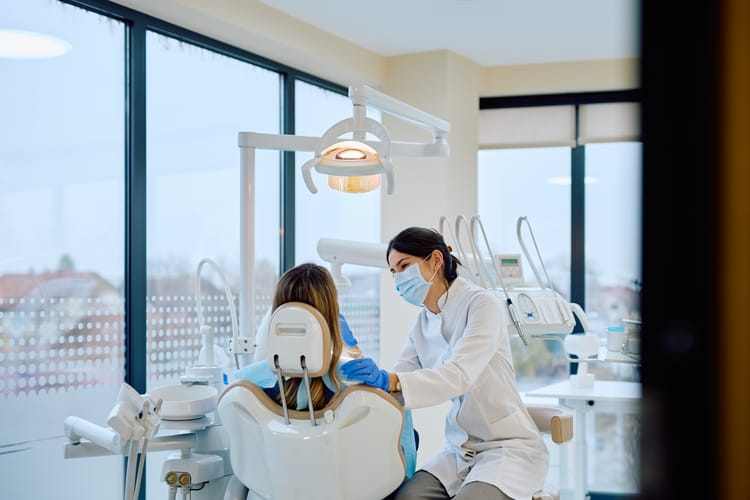Turning dental rivals into allies

A smart toothbrush helped uncover an affair—and that’s just one of the unexpected ways oral health intersects with everyday life.
In this issue, we explore how emerging technology is reshaping dentistry, from biofluorescence tools that detect biofilm earlier to AI that may soon flag cardiovascular risk during routine scans. We also examine what defines strong leadership in dental practice, how to improve team morale, and why one chief dental officer is working to build stronger partnerships between providers and insurers. Let’s get into it.

Catching oral biofilm earlier. Biofluorescence technology could help detect oral biofilm earlier. AIOBIO developed a portable, non-invasive device that uses biofluorescence to light up biofilm before it can be seen on X-rays.
What makes a dental leader great? Betsy Shapiro, DDS, and two other dentists talk about how to build leadership skills in dentistry in the latest episode of the American Dental Association's "Dental Sound Bites" podcast.
A new kind of toothbrush to handle dexterity challenges. Conditions like arthritis and carpal tunnel syndrome can make brushing difficult, but a new type of toothbrush aims to make the task easier and less painful.
Dentist sentenced for tax evasion. A Colorado dentist made use of an illegal tax shelter, but the IRS caught on.
A toothbrush and an affair. An electric toothbrush designed to track brushing habits actually alerted a woman to her husband's affair.

By Carrie Pallardy | for Dental Bite
‘How do we work as allies?’
How can a chief dental officer (CDO) help guide an insurance company’s clinical strategy? Todd Gray, DDS, offers his perspective as the new CDO at Sun Life U.S., which provides a wide range of benefits to millions of Americans.
Dr. Gray practiced as a pediatric dentist before stepping into clinical leadership roles with the State of Nevada, Teledentistry.com and DentaQuest. He looks back at his career and shares how he hopes to guide Sun Life’s clinical approach and build a more collaborative relationship with dentists in his new role.
What first led you to clinical leadership roles?
When our state moved to managed care, I was made aware of the fact that there was a position open for a part-time state dental director. I just threw my hat in the ring. I like working with this group and was fortunate enough to get that part-time state dental director position. I eventually ended up climbing the ladder with them and became their chief dental officer at one point and also oversaw their quality management team.
I've been working in managed care since late 2016. I really enjoy the opportunity to have an impact on a national level and take the clinical knowledge that I've gained through my career.
What attracted you to the chief dental officer role at Sun Life?
Sun Life acquired DentaQuest a few years back. I got to work with the Sun Life team, and I really enjoyed the work as a consultant. When they had an opportunity for the chief dental officer role, it checked all the boxes on the various things I've done over the last nine years. It just seemed like a great opportunity. I threw my hat in the ring for that and was fortunate enough to be chosen for the position.
What are some of your top priorities for enhancing Sun Life’s clinical strategy?
One of the things we really want to do is flip the narrative that if you’re a dentist and you're talking to a dental benefits administrator or insurance company, that they automatically have to be an adversary.
One of my biggest goals here is to try to flip that narrative and say: We are your colleagues. We want to be your ally. We want to work with you to achieve the goals and to provide the patient care and to increase the access for the members that you treat and to do that in a way that we are helping you to deliver quality care.
Is there anything else you are particularly excited about in the world of dentistry?
What it boils down to is: How are you serving your neighbor that comes in with a toothache? How are we serving your neighbor that could use good oral healthcare to help their systemic situation? How do we work as allies to get there? And that's what I'm excited about, and that's what we have an opportunity to do.
Continue reading the full interview on our website, dentalbite.co
Responses have been edited for brevity and clarity.

Finding the early signs of heart disease in dental scans
The National Institute of Dental and Craniofacial Research (NIDCR) granted two researchers from New York's Stony Brook University, Mina Mahdian and Prateek Prasanna, a $300,000 grant to fund the development of an AI tool that could detect the early signs of cardiovascular disease in CBCT scans. The tool would flag mineral deposits and arterial calcifications. If the researchers successfully develop this tool, it could help dentists play a role in their patients' overall health.
Why it matters: Signs of heart disease discovered during routine dental visits could empower dentists to refer their patients for cardiovascular care. (Stony Brook University News)
How is your team morale?
A disengaged dental team with poor morale is going to take a toll on practice productivity and profitability. Dental practice owners can take action to improve team satisfaction and their business outcomes. Building a culture that prioritizes respect among team members, offering opportunities for growth, providing competitive compensation and infusing work with a sense of purpose can lay the groundwork for a satisfied and engaged team, Dash Dental Consulting CEO Callie Ward writes for Dental Economics.
Why it matters: Stress and burnout are common for all dental team members. Understanding your team's satisfaction and boosting morale lead to improvements that have a positive business outcome. (Dental Economics)
Yet another TikTok trend
Snap-on veneers are one of the latest oral health trends circulating on TikTok. These temporary, plastic smiles are cheaper and easier than seeing a dental professional for veneers, but they pose a number of oral health risks. Snap-on veneers can trap bacteria and plaque, leading to decay and more dental work for patients.
Why it matters: Dentists can offer evidence-based guidance to help patients who have questions about social media trends. If patients want picture-perfect pearly whites, dentists can talk to them about the risks of trendy snap-ons and the safer alternatives. (Dentistry IQ)

- Dentist wins award for COVID oral health research
- Fake dentist caught performing procedures using skills learned online
- How to drive dental-medical integration
- Using 3D printed teeth in endodontic training



